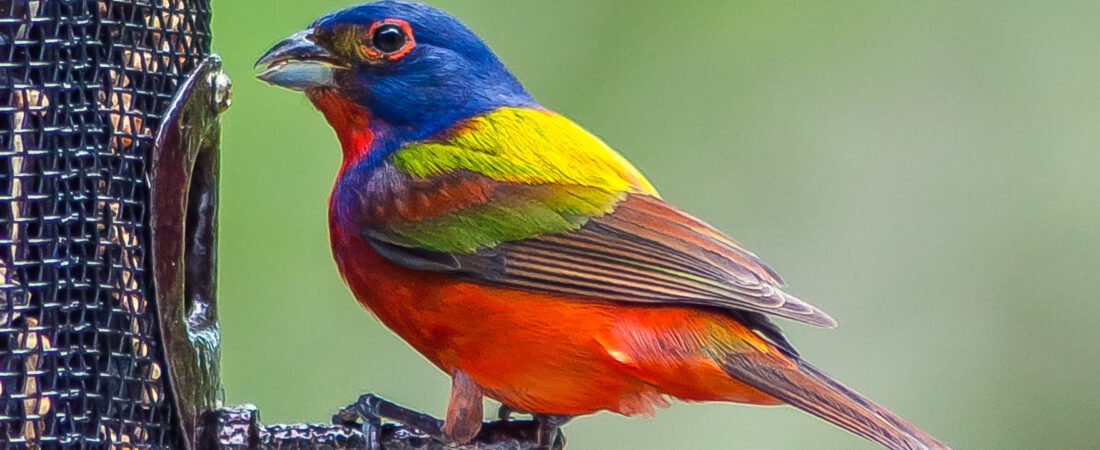Painted Bunting – Passerina ciris
Length: 5.5″; Wingspan: 8.75″; Weight: 0.54 oz.
Without a doubt, this bird is one of the most beautiful and colorful birds on Seabrook Island or anywhere else. Look for this small to medium sized multicolored finch at your bird feeder and around the edges of dense brush (such as wax myrtles) and thick woodlands. It is here from the middle of April though September. Some may stay throughout the winter, but most of our birds go south to Florida and to the northwest Caribbean Islands.
You will have no problem in identifying a mature male Painted bunting with its vivid blues, greens, yellows and reds that make it look like a small parrot. The males head is iridescent blue, its throat and underside is bright red, its back is a brilliant green fading to lighter green on the wings. Females and yearling males are a uniform greenish color with a slightly lighter eye ring.
Painted buntings naturally forage on the ground and in shrubs and are seed eaters. They are frequent visitors to Seabrook Island bird feeders and seem to prefer white millet. Although they are not typically insect eaters, they catch and feed insects to their young. They spend most of their time in thick brush often along woodland edges.
They are fast flyers, darting here and there and are difficult to follow. Males are extremely aggressive and territorial toward other males and often fight over a spot at bird feeders. Their voice is a very distinctive continuous series of short high-pitched notes lasting about 2 seconds. Males may sing 9 to 10 songs a minute establishing their territory during spring. Click here to listen to their song.
Painted buntings are polygynous raising 2 to 4 broods on Seabrook Island throughout the summer. The nest is built in a bush or tree and is a deep cup of grass, weeds and leaves with a lining of finer grass or hair. Females lay 3 to 5 eggs, incubate them for 11 to 12 days and the young leave the nest in another 12 to 14 days. Males do little in raising the young and frequently are out looking for another mate. A Florida tagging study documented one Painted bunting living in the wild for more than 12 years.
Male birds, because of their bright plumage, are caught and sold as caged birds in Mexico, Central America and the Caribbean. In the late 1800s, John Audubon reported that thousands of Painted Buntings were being shipped to Europe from the United States. Breeding bird surveys by the United States Fish and Wildlife Service estimate that the Painted Bunting population has declined by 55% over the past 30 years.
Seabrook Island is fortunate to have one of Americas most beautiful birds. Keep in mind that males only develop their brilliant multicolored plumage in their second year. Most of the Painted Buntings you will see will be the rather non-descript uniform greenish females and young-of-the-year males. The best way of spotting Painted Buntings is to become familiar with their distinctive song and once identifying where they are, watch for a flash of red, blue, yellow and green.
A group of Painted Buntings are collectively known as a “mural” and a “palette” of buntings.
(See the range map following the photographs below.)
If you would like to learn more about this bird visit:
This blog post is part of a series SIB will publish on a regular basis to feature birds seen in the area, both migratory and permanent residents. When possible we will use photographs taken by our members. Please let us know if you have any special requests of birds you would like to learn more about.
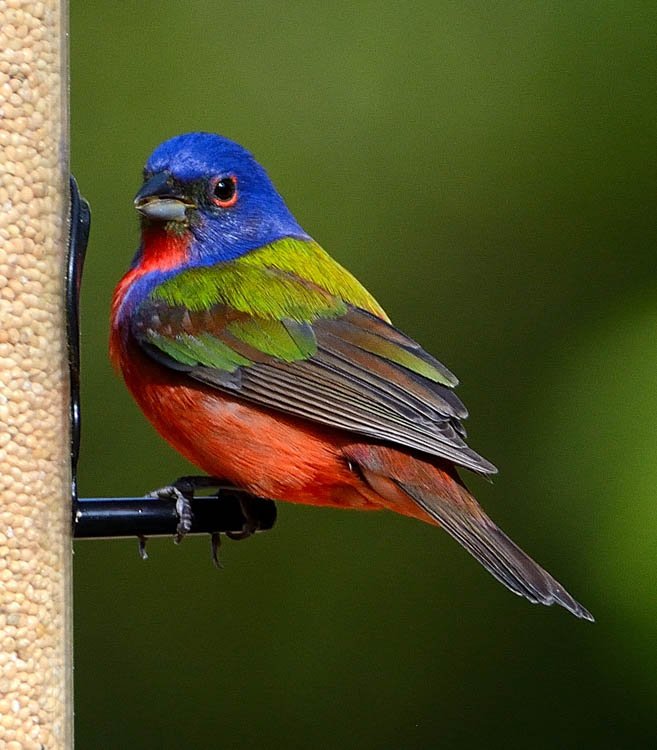
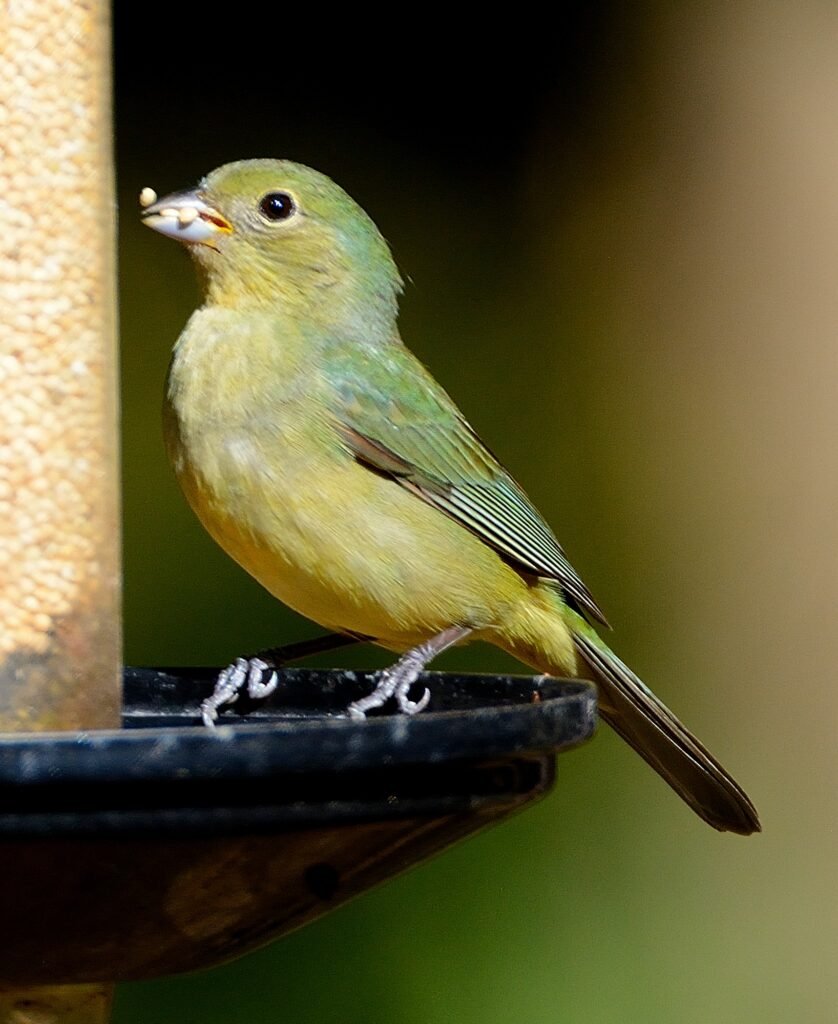
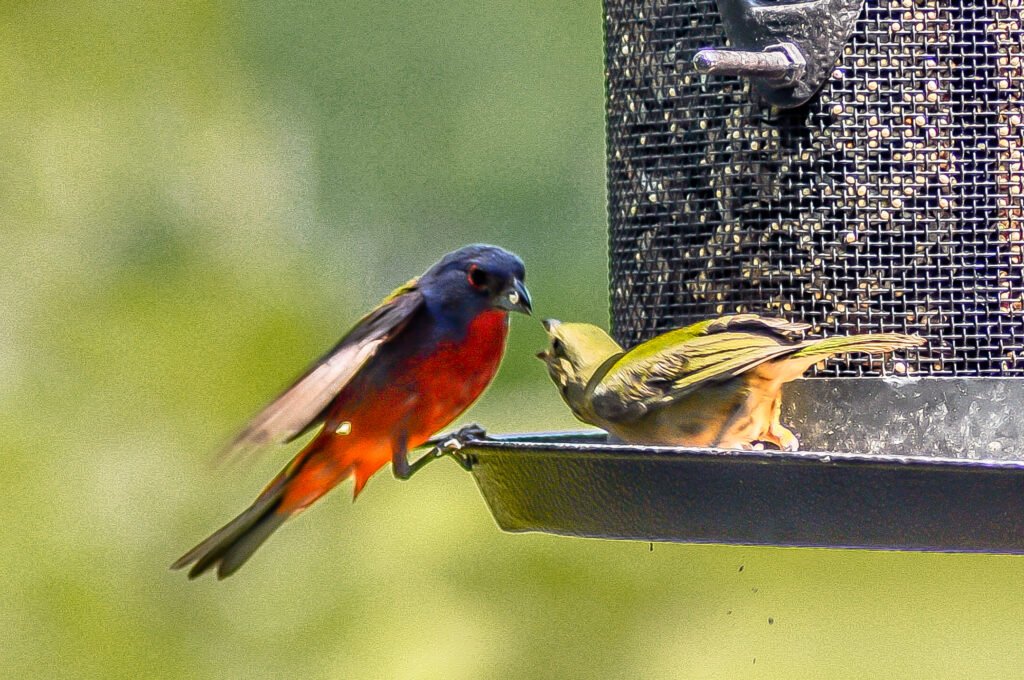
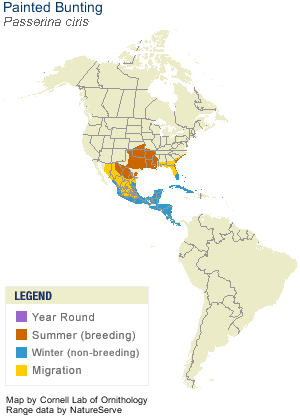
Originally submitted by: Charley Moore

